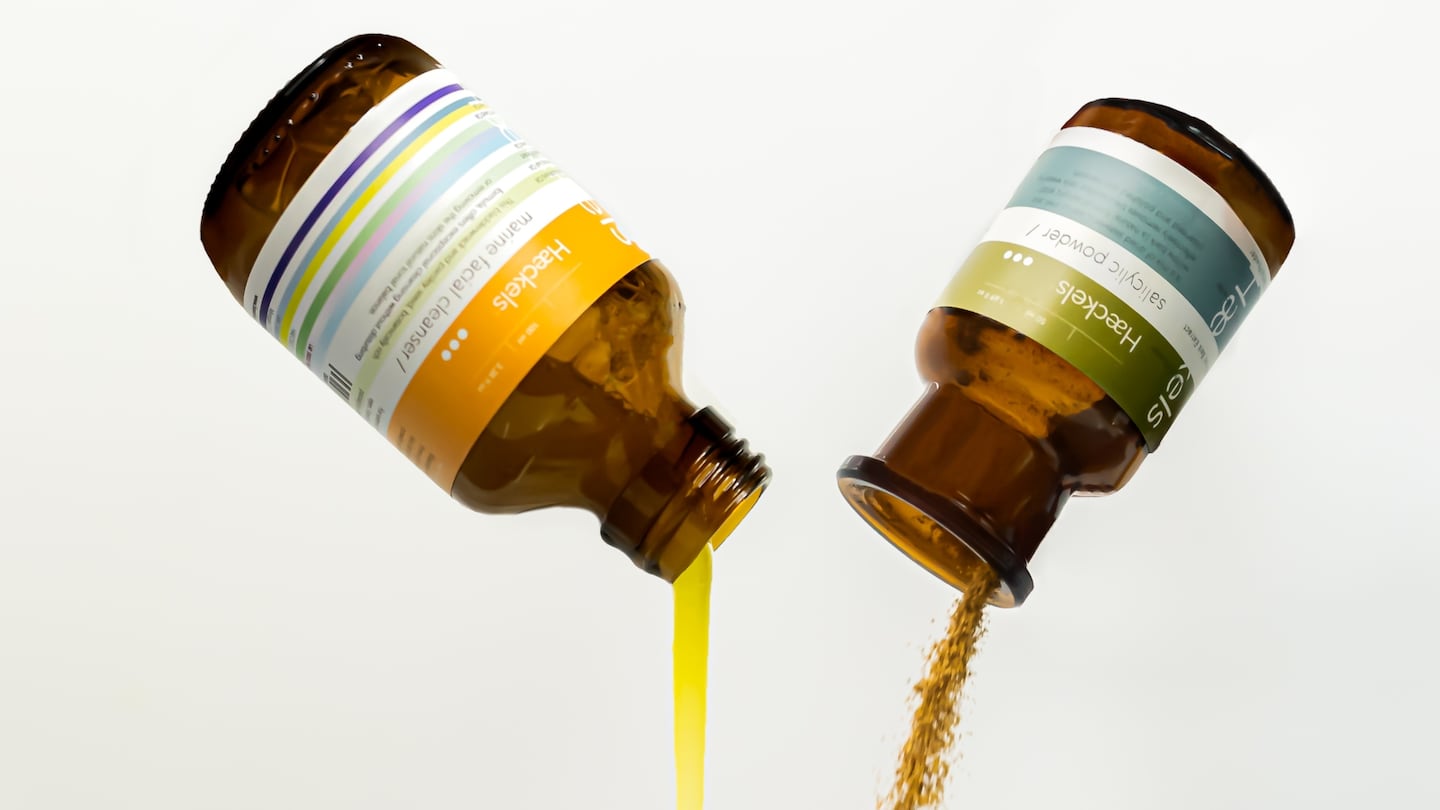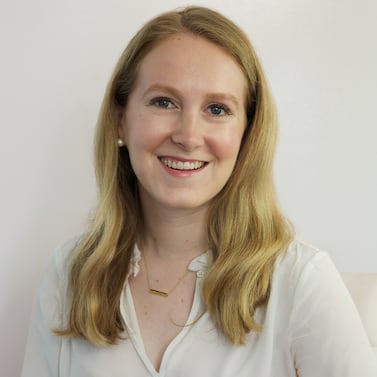
The Business of Fashion
Agenda-setting intelligence, analysis and advice for the global fashion community.

Agenda-setting intelligence, analysis and advice for the global fashion community.

KEY INSIGHTS
The Estée Lauder Companies has made a minority investment in Haeckels, the decade-old natural beauty label specialising in products made from seaweed, mushrooms, coffee grounds and other unconventional materials, the beauty conglomerate confirmed Wednesday. The terms of the deal were not disclosed.
Founded in 2012 in the British seaside town of Margate, Haeckels sells shampoo and conditioner, serums, moisturiser, candles and other products, made from waste or other natural materials. Last year, excess fresh cocktail ingredients like rosemary, lime and lemon from New York City restaurant Saga served as the base for a signature hand cleanser for the eatery. It also operates two brick-and-mortar locations that serve as part-store, part-spa, in Margate and London.
Estée Lauder’s investment in Haeckels will help fund international expansion, including setting up supply chains for waste materials outside the UK. The brand will also work to increase the sustainability of its packaging, using materials like mushroom-based mycelium; create a new product innovation arm called Haeckels Lab and translate its seaside origin story to a larger audience, and replicating the brand’s local feel in new markets.
ADVERTISEMENT
“It will be still the same kind of products, but honoring the locality of it [with a local] supply chain ... and hyper localised offerings,” said Charlie Vickery, Haeckels’ managing director. “So it also has a reason to exist outside of just like expanding, expanding, expanding.”
Estée Lauder has a history of making minority investments in brands before acquiring them outright. It invested in Deciem, which sells The Ordinary and other affordable lines, in 2017 before raising its stake to 76 percent last year, with intentions to acquire the rest later. An investment in Dr. Jart+ parent Have & Be Co. Ltd. in 2015 led to an acquisition in 2019. Last April, Estée Lauder led a $3 million seed-funding round for Faculty, a men’s grooming brand that sells nail lacquer, and soon, skin care and other cosmetics.
Often, these deals have served as a way for Estée Lauder to fill gaps in its portfolio, including appealing to younger and more sustainability-minded consumers who have flocked to newer brands at the expense of mainstays such as Bobbi Brown and Clinique.
“It’s allowing them to have a presence in brands that have a more natural vibe to them, without having to create those brands themselves,” said Mary Pickering, senior partner at Simpactful, a CPG and retail consultancy firm.
The investment comes at a strong moment for Estée Lauder as makeup sales bounce back from the pandemic: despite the rise of Omicron infections at the end of 2021, the company posted its highest quarterly sales ever, with net sales of $4.85 billion. Shana Randhava, vice president, new incubation ventures at The Estée Lauder Companies, said that “being able to participate earlier on in a brand’s life cycle is just going to build out our end-to-end M&A strategy.”
Over the past six months, Procter & Gamble has acquired a slew of beauty brands, including hair-care brand Ouai and skin-care labels Tula and Farmacy. At the end of 2021, L’Occitane bought skin-care brand Sol de Janeiro in a $450 million deal, and Blackstone made a majority investment in sunscreen brand Supergoop. Just this month, the Courtin-Clarins family announced it would acquire clean makeup brand Ilia.
“Within beauty, we’ve seen an expanded buyer universe,” said Sonya Brown, general partner at Norwest Venture Partners. “As we see more competition from other financial investors, there seems to be a broader strategic universe also that’s playing both in minority and majority positions.”
“This is a great way for them to get more than a bird’s eye view of a business without having to buy it outright.”
A New Way to Build Brands
ADVERTISEMENT
Think of Estée Lauder’s minority-investment-first approach as akin to an engagement period before marriage.
“This is a great way for them to get more than a bird’s eye view of a business without having to buy it outright,” said Marie Driscoll, director of luxury and fashion at Coresight Research. “Over a few years, you get comfortable with it and help it grow. By the time you put down the last dollar bills, you’ve integrated it into the bigger portfolio company while letting it maintain its own brand positioning.”
Estée Lauder is not the only large player in the beauty market that deploys the strategy. Unilever’s Unilever Ventures offers smaller-scale investment to brands such as skin-care label True Botanicals and supplement label Nutrafol, and also participated in “clean” makeup line Saie’s seed round alongside Gwyneth Paltrow. Coty took a 20 percent stake in Kim Kardashian West’s brand, KKW Beauty, in 2020.
Meanwhile, companies like P&G and L’Oréal are still pursuing full-out acquisitions. But like Estée Lauder, they are also seeking out smaller, earlier-stage companies. L’Oréal acquired the six-year-old skin-care brand Youth to the People, which reportedly did $50 million in sales in 2021, at the end of last year. It’s a shift from five years ago, when Estée Lauder acquired colour cosmetics brand Too Faced for nearly $1.5 billion at the end of 2016.
“[They want to acquire] a company that has enough strong benefits to be appealing to global consumers yet hasn’t gotten so big that with the price point that they’re paying, the buyer has a very high risk of no profitability for a long time,” said Pickering.
Estée Lauder’s minority-first, acquisition-later investment strategy allows for even more caution, as well as taking a more distant approach than a more financials-focused investor, which allows the brand to maintain growth at their own pace.
“One of our core tenets of this capability that we’re building out is that it really enables us to amplify their creative power, provide expertise and mentorship where they need it, and then deploy our resources, but still allow them to be autonomous in their operations,” Randhava said.
Vickery said that when Haeckels was fundraising, other investors demanded a seat on the board and a faster timeline for scaling the brand.
“[Estée Lauder was] really keen to have a hands-off operation,” said Vickery. “They were like, ‘We love what you guys are doing, we want to enable you to do it quicker, to have all the resources.’ To have the freedom and trust in our vision Estée has afforded us is amazing.”
With the past year’s flurry of tech-focused mergers, acquisitions and partnerships, the beauty industry increasingly resembles Silicon Valley. But the bets on beauty tech are just beginning.
Famille C, the Courtin-Clarins family’s private investment fund, has signed a contract to purchase the American beauty brand, which recorded sales of $100 million in 2021, for an undisclosed sum.
The luxury fashion platform sees an opportunity in beauty that has eluded many others.

Diana Pearl is News and Features Editor at The Business of Fashion. She is based in New York and drives BoF’s marketing and media coverage.
As in-person retail continues to recover, store owners and marketers are working hard to press the main advantage analogue shopping has over digital: its appeal to all the senses.
What had once been a nimble, innovative company, became slow-moving and cautious causing it to miss out on what is now a strong beauty market because it retreated precisely when rivals went all in.
According to an email viewed by The Business of Beauty, the company will be on hiatus while it establishes a sustainable path to return as a new company.
The surfing legend, a vocal opponent of chemical-based sun protection, is launching his own line of natural skincare products this week.